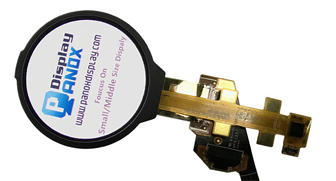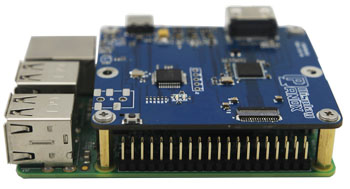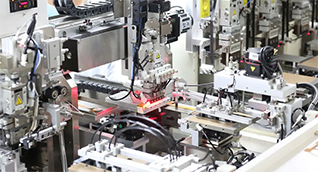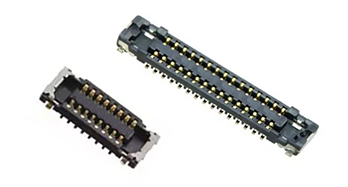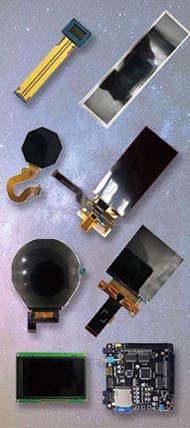Micro OLED display technology is considered the best for VR due to its ultra-high pixel density, perfect contrast, and fast response time. These features eliminate screen-door effects, reduce motion blur, and enable lighter, more power-efficient VR headsets. As a result, Micro OLED provides a premium, immersive VR experience unmatched by other display types. Also check: Micro OLED
What Is Micro OLED Display Technology and How Does It Work?
Micro OLED is a cutting-edge self-emissive display technology fabricated on silicon wafers, allowing extremely high pixel densities over 1,000 pixels per inch (PPI). Each pixel emits its own light, delivering perfect blacks and high contrast without requiring a backlight. This wafer-level manufacturing results in compact displays ideal for VR headsets demanding superior image quality and minimal bulk.
The pixels’ direct emission and silicon base enable nanosecond-level response times, crucial for fast-moving VR visuals. This technology is thus capable of providing immersive, lifelike visuals while eliminating artifacts common in LCD and AMOLED displays.
How Does Micro OLED Improve VR Image Quality Compared To LCD and AMOLED?
Micro OLED offers significantly better image quality in VR compared to LCD and AMOLED with three main advantages:
-
Pixel Density: Exceeds 1,000 PPI, which virtually eliminates the screen-door effect visible in LCD (<500 PPI) and AMOLED (~800 PPI) displays.
-
Contrast: Infinite contrast due to perfect blacks from true self-emissive pixels, surpassing the poor contrast of LCD and the good but not perfect contrast of AMOLED.
-
Response Time: Nanosecond response time reduces motion blur and latency far better than the slow LCD and even the faster AMOLED.
| Feature | Micro OLED | LCD | AMOLED |
|---|---|---|---|
| Pixel Density | >1,000 PPI | <500 PPI | ~800 PPI |
| Contrast | Infinite (perfect blacks) | Poor (backlight bleed) | High (deep colors) |
| Response Time | Nanoseconds | Milliseconds | Microseconds |
| Screen-Door Effect | Virtually none | Noticeable | Noticeable |
| Size/Weight | Compact, very light | Bulky, heavier | Medium, light |
| Cost | Highest | Lowest | Moderate |
This combination ensures Micro OLED displays deliver vibrant, sharp, and immersive VR visuals unmatched by other technologies.
Why Does Micro OLED Minimize Motion Sickness in VR?
Micro OLED’s nanosecond-level response time drastically reduces motion blur and display latency, critical factors contributing to VR motion sickness. Fast pixel transitions keep images crisp and aligned with rapid head movements, preventing visual lag and discomfort. This smoothness enhances user comfort during prolonged VR sessions and intense gameplay.
Moreover, the superior contrast and resolution reduce eye strain, further improving VR tolerance through a more natural viewing experience.
How Does Micro OLED Enable Lighter and More Comfortable VR Headsets?
Micro OLED displays, built on silicon wafers without bulky backlighting, are far more compact and lightweight than LCD or AMOLED panels. This reduction in size and weight allows VR manufacturers to design ergonomically balanced headsets that impose less strain on the user’s head and neck.
In addition, Micro OLED’s lower power consumption cuts heat generation, allowing reduced cooling needs and further enhancing comfort during extended use.
What Are the Power Efficiency Benefits of Micro OLED Displays in VR?
Micro OLED’s self-emissive pixels consume power only for active pixels, unlike LCDs that require a constant backlight, meaning much lower overall power use. This efficiency translates into longer battery life for standalone VR headsets and reduced thermal output, enhancing device reliability and user comfort.
Reduced power demands also open possibilities for sleeker headset designs without compromising usage time.
What Are the Limitations of Micro OLED Technology in VR Applications?
While Micro OLED panels offer premium visuals, they do have trade-offs:
-
High Cost: The complex silicon wafer fabrication leads to higher prices compared to LCD and AMOLED.
-
Burn-In Risk: As an OLED variant, Micro OLED can suffer from image retention or burn-in with static content, though mitigation techniques are improving.
-
Brightness: Micro OLED’s maximum brightness is generally lower than MicroLED, limiting its use in bright outdoor or AR environments.
Despite these, ongoing innovations and the superior VR experience maintain Micro OLED’s leadership in premium VR displays.
How Does Panox Display Lead in Micro OLED Solutions for VR?
Panox Display stands out by supplying high-quality Micro OLED panels tailored for VR applications. Their expertise in sourcing and OEM manufacturing, combined with end-to-end solutions including controller boards and custom designs, makes them a trusted partner for startups and established VR developers globally. Panox Display ensures access to cutting-edge displays at competitive costs with reliable delivery.
By bridging innovation and accessibility, Panox Display accelerates adoption of Micro OLED technology for next-generation immersive VR products.
Can Micro OLED Display Technology Be Used Beyond VR?
Yes, Micro OLED technology is highly versatile. Its high pixel density, contrast, and fast response time make it suitable for other demanding applications, including:
-
Augmented Reality (AR) devices (though brightness limitations present challenges)
-
Wearable electronics such as smart glasses
-
Military and aerospace visual systems requiring compact, high-performance displays
-
Industrial instrumentation and medical imaging
Panox Display leverages its expertise to serve these industries with both standard and custom Micro OLED panel solutions, driving innovation beyond VR.
What Does the Future Hold for Micro OLED in VR?
The future of Micro OLED in VR looks promising with ongoing improvements:
-
Cost reductions via increased manufacturing yields
-
Enhanced burn-in prevention technologies
-
Integration with MicroLED hybrid designs for higher brightness
-
Expanding availability enabling broader adoption in consumer and professional VR devices
Panox Display remains committed to pushing these advancements, supporting global developers in delivering immersive, lightweight, and visually stunning VR headsets.
Panox Display Expert Views
"Micro OLED technology is revolutionizing VR displays by delivering unmatched pixel density and contrast within incredibly compact form factors," says the Panox Display technical director. "Our focus at Panox is to provide scalable, high-quality Micro OLED solutions that empower developers to break through the limitations of traditional displays. With our extensive product range and system integration expertise, we help clients build lighter, more immersive VR devices that reduce motion sickness and elevate user experience. We anticipate Micro OLED will set the standard for premium VR displays in the coming years."
Summary
Micro OLED displays are transforming VR by providing ultra-high resolution, perfect contrast, and ultra-fast response times that significantly reduce screen-door effects, motion blur, and user discomfort. Their compact size and power efficiency enable lighter, more comfortable headsets with extended battery life. While cost and burn-in risks remain challenges, ongoing advancements and Panox Display’s innovative supply chain solutions make Micro OLED the definitive choice for premium VR experiences. Developers should consider Micro OLED to future-proof their VR products and maximize immersion.
Frequently Asked Questions (FAQs)
Q: How does Micro OLED eliminate the screen-door effect in VR?
A: Micro OLED achieves over 1,000 PPI pixel density, so pixels are packed tightly without visible grid lines, eliminating the screen-door effect common in lower-resolution displays.
Q: Is burn-in a major issue for Micro OLED VR displays?
A: Burn-in risk exists but is mitigated with newer materials, pixel-shifting algorithms, and usage patterns, extending panel lifespan in VR headsets.
Q: Why is Micro OLED more power-efficient than LCD?
A: Micro OLED emits light directly from pixels, requiring no backlight, which significantly reduces power consumption compared to constant backlit LCDs.
Q: Can Micro OLED be used for outdoor AR applications?
A: Its brightness is lower than MicroLED, limiting use in bright environments, but it is excellent for indoor AR and VR scenarios requiring rich, true blacks.
Q: How does Panox Display support VR manufacturers with Micro OLED technology?
A: Panox offers standard and custom Micro OLED panels, complete display systems, and OEM services, making premium VR displays accessible and reliable for various projects.











